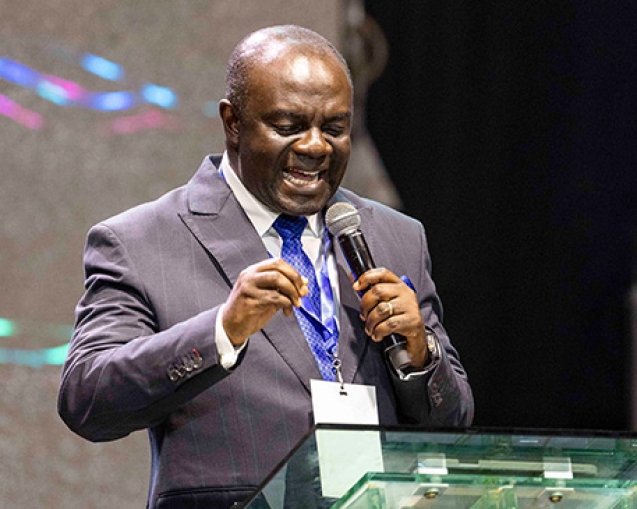INTRODUCTION
The Gospel of Matthew contains numerous accounts of Jesus’ teachings and his interactions with various groups, including the religious leaders of his time. In Matthew 19, Jesus is approached by the Pharisees, who question him about the permissibility of divorce. This passage delves into Jesus’ response, where he reinforces God’s original design for marriage and emphasises its sanctity and permanence.
Jesus departs from the region of Galilee, where he had been ministering – imparting wisdom and performing miracles. He moves toward the region of Judea, beyond the Jordan River. Large crowds follow Jesus, drawn by his teachings. Jesus spends time with the people, addressing their spiritual needs. The Pharisees take advantage of the opportunity when Jesus is present in the region of Judea, and they approach him in the midst of the crowd with their question about divorce and remarriage.
THE PHARISEES’ QUESTION AND INTENTIONS
The Pharisees were a religious sect known for their strict adherence to the Mosaic Law and their focus on legalistic interpretations. They were among the religious leaders of Jesus’ time who often questioned and challenged his teachings. The Pharisees were often in opposition to Jesus’ teachings, and they sought to challenge him on various matters.
The Pharisees approach Jesus in the midst of the crowd with a question about divorce or inquire whether it is lawful for a man to divorce his wife for any cause (Matthew 19:3). The Pharisees further question Jesus, inquiring why Moses allowed divorce if God designed marriage to be permanent (Matthew 19:7-9).
They reference Deuteronomy 24:1, which allows a man to divorce his wife or permits a man to give his wife a certificate of divorce if he found “some indecency” in her. This question about divorce was a subject of debate among Jewish scholars and religious groups during that time. By approaching Jesus in the midst of the crowd, they hoped to witness his response to a contentious issue and potentially undermine his credibility or authority.
The intention was not necessarily to seek genuine guidance but to test or challenge Jesus, revealing the ongoing opposition he faced from religious leaders during his earthly ministry. They may have wanted to engage in a theological debate or hoped to catch Jesus in a dilemma, given the diverse opinions on divorce prevalent in Jewish society.
The rationale was likely to test Jesus’ understanding of the law and determine if his views aligned with or deviated from established teachings. Despite their motives, Jesus’ response in this encounter demonstrates his wisdom, authority, and adherence to God’s original plan for human relationships.
DIFFERING INTERPRETATIONS ON DIVORCE IN JEWISH SOCIETY
During Jesus’s time, the Jewish religious leaders had differing interpretations of the Mosaic law regarding divorce. Some factions held that a man could divorce his wife for nearly any reason, while others had stricter interpretations.
There were two main schools of thought that held varying positions on the permissibility and grounds for divorce. The lenient approach of the school of Hillel and the stricter stance of the school of Shammai.
The school of Hillel had a more lenient approach, allowing divorce for various reasons, while the school of Shammai took a stricter stance, permitting divorce primarily in cases of adultery or sexual misconduct.
Therefore, generally, the Pharisees believed that divorce was permissible under certain circumstances.
JESUS’ RESPONSE AND REFERENCE TO CREATION (MATTHEW 19:4&5)
“He answered, ‘Have you not read that he who created them from the beginning made them male and female…'” Jesus challenges the Pharisees’ understanding of divorce by referring them back to the creation account in Genesis 1:27 and 2:24.
He highlights the fact that God created humanity with distinct male and female genders. By mentioning “from the beginning,” Jesus emphasizes the foundational importance of God’s design for humans as male and female.
The Greek word for “created” is “Ktizo,” which means to bring into existence, to shape, or to form. The word signifies God’s purposeful and deliberate act of creating them with marriage in mind.
The texts emphasize God’s original design of male and female for marriage and the significance of this foundational truth.
In Greek, “male” is “arsenos” and “female” is “thelu,” to explicitly refer to the biological distinction between men and women. He implies that marriage is inherently between a naturally born male and female, thereby rejecting the idea of same-sex marriage of the LGBTQ+ agenda. This affirms gender distinctions or gender and sexuality as inherent parts of God’s intentional design, not cultural constructs.
“…and said, ‘Therefore a man shall leave his father and his mother and hold fast to his wife, and the two shall become one flesh.” Jesus quotes from Genesis 2:24 to demonstrate the nature and purpose of marriage.
THE NATURE OF MARRIAGE ACCORDING TO JESUS (MATTHEW 19:5&6)
Jesus’ emphasis on leaving parents, holding fast, and becoming one flesh in marriage.
- LEAVING. “Therefore, a man shall leave his father and his mother.” The Greek word for “leave” is “aphiemi,” meaning to depart or let go. The phrase signifies the establishment of a new family unit through marriage. It emphasizes the idea that a man is to separate from his parents’ household and form a new, independent family with his wife. Marriage involves a change of primary loyalty.
- HOLDING FAST. “And hold fast to his wife.” The Greek word for “hold fast” is “Kallao,” conveying the idea of being joined or glued together. It also stresses the permanence and deep intimacy of the marital bond. It implies a steadfast connection that cannot be easily separated.
- BECOMING ONE FLESH: “And they shall become one flesh.” The Greek phrase for “one flesh” is “mia sarx,” which signifies the deep unity and intimacy that marriage brings. It emphasizes that the marital relationship involves more than just physical union but also a merging of hearts, minds, emotions, purpose, and identities in a lifelong covenant commitment.
DIVORCE AND REMARRIAGE (GENESIS 2:24 & MATTHEW 19:8-9)
Jesus’ quoting of Genesis 2:24 is a direct response to the Pharisees’ question about divorce. By referring to God’s original design for marriage, Jesus implies that divorce goes against God’s intention.
Jesus’ response or words uphold the sanctity and permanence of marriage while also correcting the misconceptions and divergent interpretations prevalent in Jewish society.
He emphasizes that marriage is a lifelong covenant commitment between one man and one woman characterized by intimacy, unity, and fidelity. This passage serves as a foundation for the Christian understanding of marriage.
Jesus explains that Moses allowed divorce due to the hardness of people’s hearts, not because it was part of God’s original plan. Jesus’ statement upholds that divorce is not to be taken lightly, and remarriage after an illegitimate divorce is considered adultery.
The use of the term “adultery” emphasizes the severity of engaging in a new marriage after an unscriptural divorce. Jesus declares that remarriage after an illegitimate divorce results in adultery, signifying the gravity of the offense in God’s eyes. He clarifies that divorce and remarriage, except in cases of “porneia,” which includes sexual immorality or infidelity, go against God’s intention for marriage (Matthew 19:8&9).
While the text stresses the seriousness of divorce and remarriage, it is essential to remember that Jesus also teaches forgiveness and grace for those who have experienced broken marriages.
THE STANCE OF THE CHURCH OF PENTECOST ON DIVORCE AND REMARRIAGE
The church, from its inception, maintains its position that the Bible does not permit divorce as indicated by these scriptures: Proverbs 2:16&17, Malachi 2:13-16, Matthew 19:6-9, Mark 10:11&12, Luke 16:18, Romans 7:2&3, and 1 Corinthians 7:11.
Accordingly, in The Church of Pentecost, every effort is made to prevent divorce by ensuring the sanctity, integrity, and survival of marriages.
CONCLUSION
In conclusion, Matthew 19:1-9 sets the stage for a critical discussion on the sanctity, exclusivity, and permanence of marriage. Jesus’ teachings emphasise God’s original design, the heterosexual nature of marriage, and the limitations on divorce. The passage, thus, provides valuable insights into Jesus’ perspective on the divine institution of marriage and its significance in marital relationships.
Written by Overseer Ebenezer Yeboah (Sindaa District, Sawla Area)

















